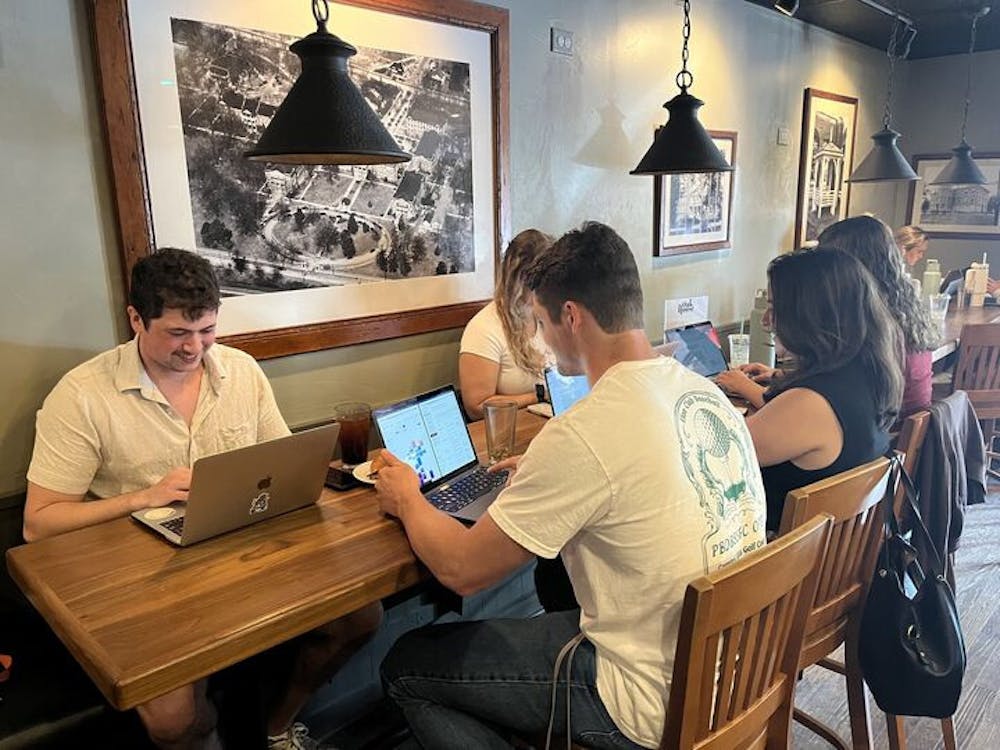As part of their senior seminar, senior policy studies students Ciara Longsworth, Ethan Haqq, Mike Sanderson, Morgan McGlynn and Sidra Kennedy were given a project to work with the Town of Elon to investigate the issue of pedestrian safety on campus.
“This was one of the main issues that the town government had already been addressing,” Sanderson said. “They wanted to bring in a group of students to put together a piece on it.”
As part of their project, they conducted a survey of over 200 students on pedestrian and road laws — followed by the creation of an educational campaign in the form of a video.
“We decided to conduct a survey in order to get perceptions of other students,” Kennedy said. “Then we wanted to make an educational campaign in order to educate students on the importance of knowing what the North Carolina road laws actually are.”
According to the Elon Police Department, there have been 9 pedestrian-related incidents reported since 2020, but the survey indicates that there have been several occasions where something happens and people don’t go through the formal report process.
According to Sanderson, it is evident that pedestrian safety is a growing issue on campus.
“I think it’s fair to say that it is growing at a similar rate as the Elon student population,” Sanderson said. “As we have more students, we have more accidents.”
According to the results of the survey, there are still many misconceptions on the laws of pedestrians while crossing the street.
“The biggest misconception on the survey was North Carolina Road Laws,” Haqq said.
For example, 79% of students in the survey thought that if a pedestrian is waiting to cross the crosswalk, then they have the right of way.
“This is not true,” Longsworth said. In reality, state law dictates that pedestrians must obey the same signals as drivers traveling in the same direction. Therefore, pedestrians should not start to cross during a red or yellow symbol.
At intersections with special “Walk” or “Don’t Walk” signals, pedestrians must obey these signals as well.
“A lot of students also still seem to not know that in order to get the walk signal, you need to push the buttons,” Longsworth said.
Kennedy said she believes that the best way to address misconceptions is through their educational campaign video, which includes interviews of students who have been through pedestrian-related incidents.
“The video shows the importance of the issue,” Kennedy said. “And then the second part is more about education.”
Chief of Campus Safety and Police Joe LeMire told Elon News Network that he believes the best way to enforce pedestrian safety laws is education — even if it can’t be fully accomplished overnight. His hope is that safety information is included in different circumstances throughout a student’s time at Elon.
“It’s something that you do over a period of time,” LeMire said. “Are we able to hit it during orientation? Are we able to hit it while we are mixing with a group in residence halls? Are we able to mix it if we mix with a student group when we bring in certain types of safety information?”
Lemire also said that the dissemination of information is one of the best and simplest ways for those on campus to understand pedestrian safety laws.
“The problem for law enforcement is always how do we get an audience,” LeMire said. “But I could tell you and you could correct ten of your friends, and then that information will spread.”
LeMire urged students to share what they know about pedestrian safety with their peers, ensuring that students are staying as safe as possible.
“Whether it’s traffic safety or personal safety, situational awareness is always number one,” LeMire said. “‘Do I know who is around me? Am I watching what I’m doing?’”


